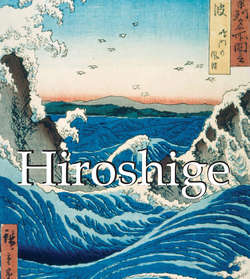Читать книгу Hiroshige - Mikhail Uspensky - Страница 4
На сайте Литреса книга снята с продажи.
ОглавлениеBetween the seventeenth and nineteenth centuries in Japan, the Edo period (1603–1868), a new tendency in urban art developed and it is to this style, known as ukiyo-e, literally “pictures of the floating world”, that the woodblock print belongs.
Ando Hiroshige is quite possibly the most famous Japanese print artist beyond his native shores. In 1811 he joined the pupils of one of the prominent print artists of the day, Utagawa Toyohiro. From the turn of the 1830s, Hiroshige’s thoughts were more and more concentrated on the landscape, which subsequently became the chief theme of his creative work.
Peach, Plum, Chrysanthemum, a Monkey, and Chickens
From the series Shellwork from an exhibition at Okuyama in Asakusa
1820
Colour woodblock print, 38 × 25.5 cm
Victoria and Albert Museum, London
Over the course of more than twenty years, the artist produced several series of prints, which demonstrated most vividly his talent in that sphere of art. In the 1850s Hiroshige’s work underwent a radical change: the earlier smooth narrative manner gave way to abrupt compositional and chromatic contrasts.
Hiroshige’s landscapes represented a new and final stage of development in the ukiyo-e landscape print and, more broadly, in the traditional art of Japan. For him, there were no vulgar objects, and in his work any landscape motif reflected in human perception is a means of penetrating the essence of nature, its spirit
Kanbara, from the series “Fifty-three stages of the Kisokaido”
Tokaido gojusan-tsugi: Kanbara
1835–42
Brocade print, 38 × 25.5 cm
Tokyo National Museum, Tokyo
